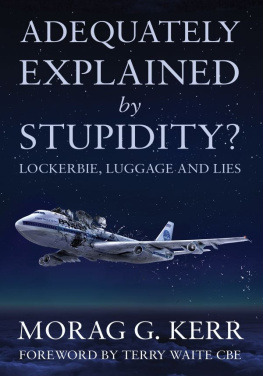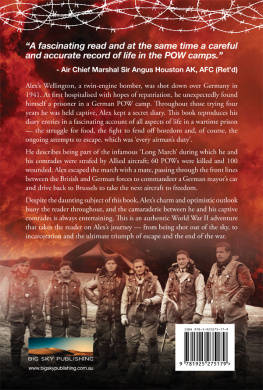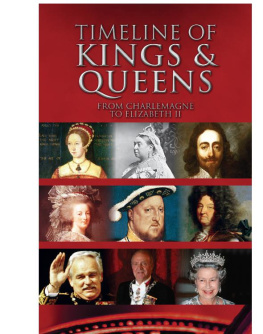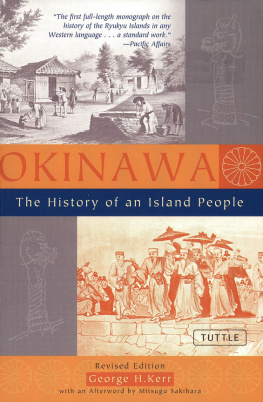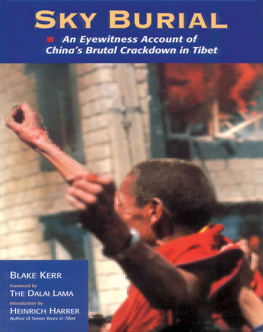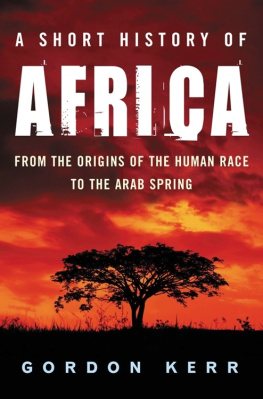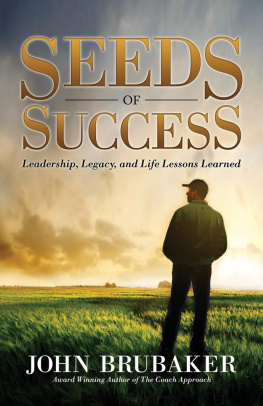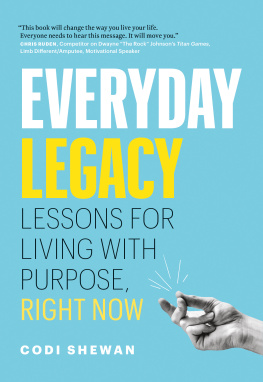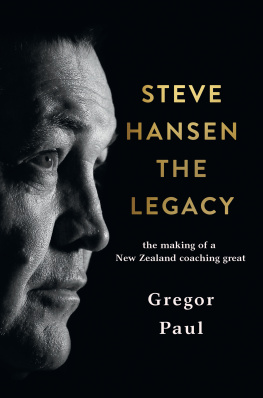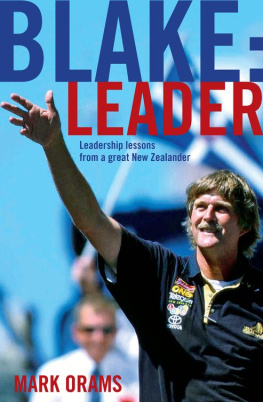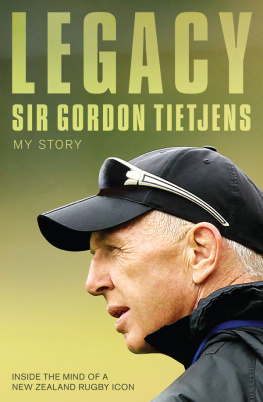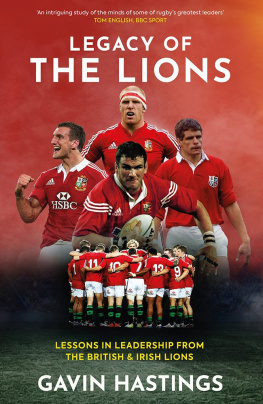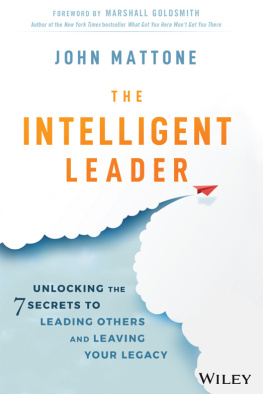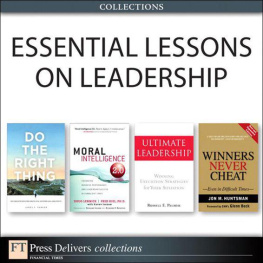LEGACY
WHAT THE ALL BLACKS
CAN TEACH US ABOUT THE
BUSINESS OF LIFE
LEGACY
15 LESSONS IN LEADERSHIP
JAMES KERR
Constable London
Constable & Robinson Ltd
55-56 Russell Square
London WC1B 4HP
www.constablerobinson.com
First published in the UK by Constable,
an imprint of Constable & Robinson Ltd., 2013
Copyright James Kerr, 2013
Every effort has been made to obtain the necessary permissions with reference to copyright material, both illustrative and quoted. We apologise for any omissions in this respect and will be pleased to make the appropriate acknowledgements in any future edition.
The right of James Kerr to be identified as the author of this work has been asserted by him in accordance with the Copyright, Designs and Patents Act 1988
All rights reserved. This book is sold subject to the condition that it shall not, by way of trade or otherwise, be lent, re-sold, hired out or otherwise circulated in any form of binding or cover other than that in which it is published and without a similar condition including this condition being imposed on the subsequent purchaser.
A copy of the British Library Cataloguing in Publication data is available from the British Library
ISBN 978-1-47210-353-6 (paperback)
ISBN 978-1-47210-490-8 (ebook)
Printed and bound in the UK
1 3 5 7 9 10 8 6 4 2
Cover design: www.aesopagency.com
The Challenge
When the opposition line up against the New Zealand national rugby team the All Blacks they face the haka, the highly ritualized challenge thrown down by one group of warriors to another. Mori believe that the haka draws up tpuna, our ancestors, from the earth to the soul. It summons them to aid us in our struggle here on earth with the sound of ngunguru, the low rumble of an earthquake:
Tis death! tis death!
I may die! I may die!
Tis life! tis life!
I might live! I might live!
Opposing teams face the haka in different ways. Some try to ignore it, others advance on it, most stand shoulder to shoulder to face it. Whatever their outward response, inwardly the opposition know that they are standing before more than a collection of fifteen individual players. They are facing a culture, an identity, an ethos, a belief system and a collective passion and purpose beyond anything they have faced before.
Often, by the time the haka reaches its crescendo, the opposition have already lost. For rugby, like business and like much of life, is played primarily in the mind.
The All Blacks are the most successful rugby team in history. They have been called the most successful sports team, in any code, ever. In the professional era, they have an extraordinary win rate of over 86 per cent and are the current World Champions.
How do the All Blacks do it?
Whats the secret of their success?
What is their competitive advantage?
And what can we learn from it?
In June 2010, alongside photojournalist Nick Danziger, I was embedded for five weeks inside the All Blacks set-up as they began working towards the Rugby World Cup. This gave me a privileged insight into an extraordinary high-performance culture; I learnt that their methods provide an inspiring and effective model for leaders in other fields.
In February 2013, I revisited former team coach Sir Graham Henry and his right-hand men Wayne Smith and Gilbert Enoka, key figures in the All Blacks World Cup success, and asked them some questions of leadership. I also spoke to iconic former All Blacks, advertising men, management consultants, HR and engagement specialists, designers, teachers, lawyers, a cocktail of psychiatrists, psychologists and physiotherapists, an opera singer, a stunt pilot and experts in Mori tribal customs, language and beliefs. I cross-referenced the research to my own experience in brand storytelling, culture change and engagement for some of the worlds leading businesses in an attempt to explain the All Blacks exceptional success and how we might apply it to leading our own businesses and our own lives.
What I learnt forms the basis of this book.
The haka reminds us of the inherent fragility of all life. How little time is given to each of us. And how much we still have to do.
It reminds us:
This is our time.
James Kerr
CONTENTS
Exceptional success requires exceptional circumstances.
Wayne Smith, former All Blacks assistant coach
I
CHARACTER
Waiho m te tangata e mihi.
Let someone else praise your virtues.
SWEEP THE SHEDS
Never be too big to do the small things that need to be done |
New Zealand v Wales, Carisbrook, Dunedin, 19 June 2010
Its a cold place, Carisbrook, says All Blacks centre Conrad Smith. The wind whips off Antarctica and heads straight for your balls. The posters for the match say Welcome to the House of Pain.
Head coach Graham Henry takes a walk with Raewyn, his wife a pre-match ritual. His assistants, Wayne Smith and Steve Hansen, chat with manager Darren Shand in the breakfast room of the hotel. Gilbert Enoka, the mental skills coach, moves through the players, chatting. Their barefoot guru.
Upstairs, Errol Collins, aka Possum, the baggage man, begins laying out the jerseys.
Every team has its Poss. Ostensibly his role is to take care of the kit. From goal pads to practise balls, warm-up jackets to chewing gum, training socks to sensible, wry, homespun advice, Poss is your man. Hes there to take care of the players. On test day, he lays out the black jersey.
Mori have a word, taonga, which means treasure. The black jersey is taonga, a sacred object.
This black jersey with its silver fern.
Since 1905, when the Originals arrived and took Europe by storm, the black jersey has captured the essence and hopes of this small island nation. Over the last 100 years or so it has transformed from a makeshift garment with laces at the neck to the modern, sweat-wicking, tight-fitting gladiatorial armour of today, but at heart it remains the same; a symbol of excellence, hard work and a New Zealanders ability to become, with effort, sacrifice and skill, the best in the world.
Successful leaders balance pride with humility: absolute pride in performance; total humility before the magnitude of the task.
After an early lunch chicken, baked potatoes the players head upstairs in twos and threes: the captain, Richie McCaw, Kieran Read, Tony Woodcock, Brad Thorn, Joe Rokocoko... The Chosen.
They collect their prize: black shorts, black socks with three white stripes, the black jersey with the silver fern. As the jerseys go on, so do the game faces. The players become All Blacks.
I can still remember Richie McCaws first jersey, Gilbert Enoka says. He spent about forty-five seconds to a minute with his head just buried in the jersey.
Today is McCaws ninety-first test.
A win today against the Welsh is not enough, says a pundit. It has to be a big win.
In the stadium, beer cans rattle against the hoardings. A helicopter thumps overhead. Someone sells T-shirts.
McCaw steps off the bus. There is a cry, a pwhiri, the traditional Mori welcome. A lone Mori male with a taiaha, a thrusting spear. There is an explosion of camera flashes.
McCaw accepts the challenge on behalf of the team.
Women swoon. Men too.
The All Blacks head for the sheds.
Under the stadium there are trestle tables loaded with lineaments, bandages, and cups of carbohydrates. The New Zealand flag is on the wall; the Union Jack and the Southern Cross.
Next page

